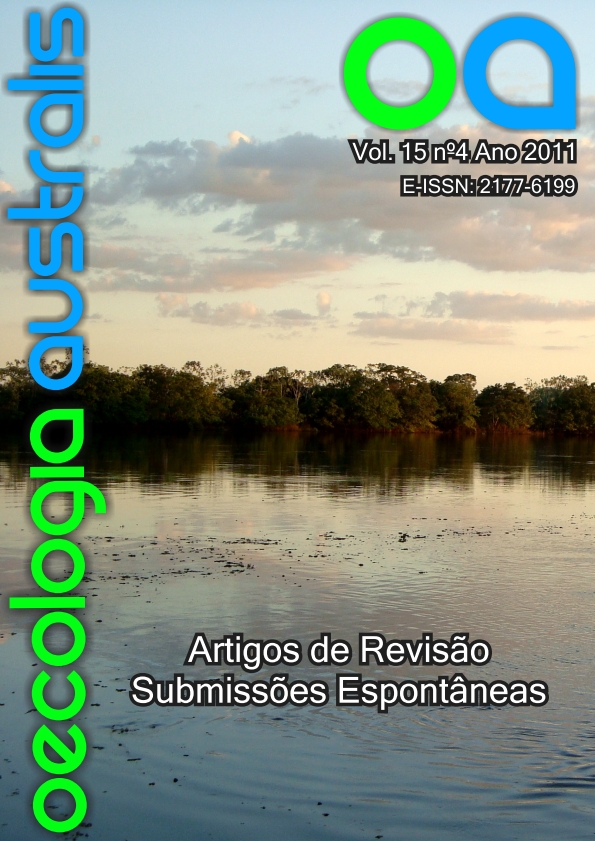O PAPEL DOS TRAÇOS FUNCIONAIS NA ECOLOGIA DO FITOPLÂNCTON CONTINENTAL
Keywords:
fitoplâncton, estrutura da comunidade, grupos funcionais, traços funcionais.Abstract
THE ROLE OF THE FUNCTIONAL TRAITS ON THE PHYTOPLANKTON ECOLOGY IN INLAND WATERS. To cluster species based on their functional traits has been a growing trend in ecology due to its ability to predict or explain the structure of communities and their responses to environmental conditions. The aim of this review is to discuss the foundations of approach based on functional traits in the ecology of freshwater phytoplankton. First, we identify the functional traits relevant to phytoplankton; then we provide a review of the functional approach literature and, finally, we analyze Brazilian freshwater ecosystems using the functional groups (FG) proposed by Reynolds et al. (2002). Functional traits affect the fitness of species through their effects on reproduction and survival. These traits can be: morphological (i.e. size, shape), physiological (i.e. concentration and composition from photosynthetic pigments, capability of nitrogen fixation, toxin production), behavioral (i.e. mixotrophy, motility) and life history (i.e. asexual/sexual reproduction, production of resting stages). Results from a multivariate analysis based on data from 33 aquatic ecosystems indicate that different types of ecosystems (rivers, lakes, estuaries and reservoirs) share similar FG across similar trophic states. Oligotrophic systems were dominated by small organisms or larger one equipped with functional traits, such as flagella or mixotrophy behavior, that allow them to live in poor nutrient conditions. In mixed hipertrohic lakes, both the enriching in nutrient condition (that provide matter enough to allow the increase in the size of the organisms), and the decrease in water transparency favor the dominance of large organisms with high surface/volume ratio, such as filamentous cyanobacteria. Although the scheme proposed by Reynolds et al. has been a potential tool to sum up the community types in Brazilian aquatic ecosystems, it presents some limitations, such as: (i) some FGs have been added on the intuitive grounds, (ii) the need of taxonomic knowledge from a specialist, and (iii) cyclic reasoning. Other schemes have been proposed due to these limitations. Thus, future studies should give emphasis to test the scheme which better predict the community composition of phytoplankton in relation to environmental conditions.
Keywords: Phytoplankton; community structure; functional groups; functional traits.


